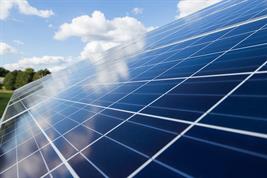08.07.2024

A study published in Energy, Sustainability and Society examines the attitude of nature conservation organizations towards the installation of photovoltaic systems in agricultural landscapes. The study was conducted as part of a master's thesis at Humboldt University of Berlin and the Leibniz Center for Agricultural Landscape Research (ZALF). The results show a growing acceptance of renewable energies, but also underline the need for a co-design process in which all stakeholders are involved in the planning and implementation of photovoltaic systems at an early stage.
Photovoltaic systems can represent a sustainable alternative to fossil energy sources, but their installation on agricultural land often leads to conflicts of use. This study analyzes the perspectives of nature conservationists in Brandenburg on ground-mounted photovoltaic systems (GM-PV) and high-mounted agrivoltaic systems (agri-PV), which combine agriculture and energy production on the same land.
Through interviews with local representatives and analyses of position papers from nature conservation associations, the research team found that there is broad support for rooftop PV systems in this group, while large ground-mounted systems are less accepted. Smaller systems and agri-PV systems, on the other hand, meet with a more open attitude, as they could mitigate land use conflicts.
Cooperation with interest groups increases their acceptance
Author Janna Marie Hilker emphasizes: "The study shows that local and regional conditions as well as the interests of those affected must be taken into account when planning PV systems in order to achieve greater acceptance and compatibility with nature conservation goals."
The study makes it clear that the acceptance of PV systems increases if the planning process is organized in accordance with local interests and ecological standards. Nature conservation organizations can help to develop environmentally friendly design options that promote both climate protection and biodiversity.
Future developments and research needs
DThe results of the study suggest that in future, ecological standards and the demands of local stakeholders and interest groups should be given greater consideration in the planning and implementation of PV projects. Agri-photovoltaic systems could play an important role in the energy supply in Germany and Brandenburg by reducing land use conflicts and preserving biodiversity at the same time.
However, there is still a need for research to investigate the long-term effects of agrivoltaics on nature and landscapes. The continuous monitoring of demonstration and trial installations as well as the further development of agri-PV technologies and designs within an open innovation process are necessary to promote local acceptance and find satisfactory long-term solutions.
Funding
Open Access funding enabled and organized by Projekt DEAL. No funding was available for this study.
https://deal-konsortium.de/
Text disclaimer:
This is a summary of the original text created with the help of artificial intelligence: Hilker, J.M., Busse, M., Müller, K. et al. Photovoltaics in agricultural landscapes: “Industrial land use” or a “real compromise” between renewable energy and biodiversity? Perspectives of German nature conservation associations. Energ Sustain Soc 14, 6 (2024).
https://doi.org/10.1186/s13705-023-00431-2, published Open Access.
The text has been carefully reviewed and revised in the light of the AI regulations at ZALF.
